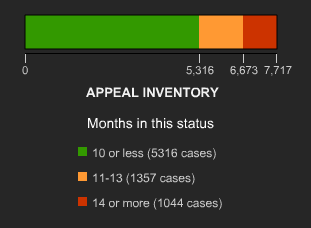The USPTO has initiated a new pilot program for expediting ex parte appeals from examiner rejections. Under the Fast-Track Appeals Pilot Program, applicants can pay $400 for expedited review in which case the USPTO will endeavor to render a decision within six months. The USPTO will expedite only 125 appeals per quarter and the program is set to expire once 500 appeals have been expedited or July 2, 2021, whichever occurs earlier.
The USPTO Fast-Track Appeals Pilot Program
As set forth in the July 2, 2020 Federal Register Notice, the Fast-Track Appeals Pilot Program is available in ex parte appeals in which a docketing notice has been received and requires a simple petition and $400 fee. Applications already afforded special or expedited status on appeal are excluded from the program.
Participation in the Fast-Track Appeals Pilot Program does not require foregoing an oral hearing, but there may be less flexibility in the hearing location, and a request to reschedule an oral hearing will result in a loss of Fast-Track status. (Conducting the hearing by videoconference or telephone still will be an option.)
As noted above, the USPTO will expedite only 125 appeals per quarter. The Federal Register Notice warns the petition fee is not refundable, and advises applicants to monitor the number of granted petitions before submitting a petition. (The USPTO will publish that information on the PTAB Fast Track website.). Along the same lines, the Notice advises that petitions will be decided in the order of receipt, and while applicants will be given an opportunity to correct any deficiencies, petitions will be decided based on the date of receipt of the corrected grantable petition.
Pendency of Ex Parte Appeals
There was a time when taking a case to appeal meant waiting three years for a decision. When I wrote this article in 2013, over 25,000 appeals were on the Board’s docket, with over 13,000 having been pending for more than 14 months. Today’s statistics look a lot better, with an average appeal pendency of about 15 months and only about 1000 appeals pending for more than 14 months.

(source)
Still, it is likely many applicants will welcome this new opportunity to achieve faster resolution of ex parte appeals. Indeed, the USPTO hopes the program will “hasten patentability determinations on new inventions and the pace at which products or services embodying these inventions are brought to the marketplace, thus spurring follow-on innovation, economic growth, and job creation.”
The Pilot Nature Of The Pilot Program
The Federal Register Notice discusses several aspects of the program the USPTO will monitor during the pilot period. For example, if use of the program “adversely impacts the pendency of other appeals” the USPTO may modify or terminate the program. In that regard, the Notice explains that the 500 Fast-Track appeal limit “corresponds to approximately 8% of the total number of new appeals received in the average fiscal year and was chosen in accordance with maintaining the PTAB’s overall decision pendency goals.” As with all pilot programs, the USPTO also may modify or terminate the program if a sufficient number of applicants do not take advantage of it.
